A record of the total solar eclipse
These are some of the pictures I took during the eclipse trip.
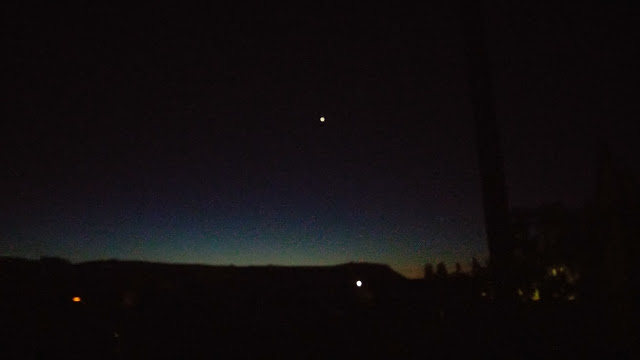
Venus, in the morning of Sunday, August 20th, the day before the total eclipse of the sun. This is unrelated to the eclipse, but the Morning Star is always a treat. Note how it's bright enough to be the only star in the sky visible on a cell phone camera, and rivals some terrestrial lights in magnitude.
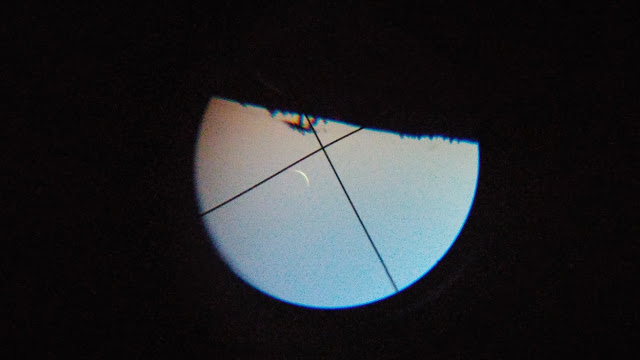
Moonrise, in the morning of the day before the eclipse. Note how thin it is, with the illuminated side directed towards the ground, where the sun has yet to rise. That sliver of light coming around the edge shows that the moon and the sun are still slightly misaligned. But on August 21st, around 10am, everything will have moved just enough for the moon to completely cover the sun.
This image was taken with a cell phone through a viewfinder scope, so it's upside down.
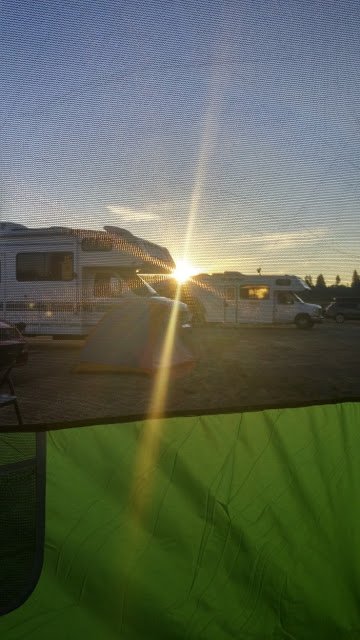
Sunrise, still on the day before the eclipse. At this point both Venus and the crescent moon are impossible to see, having been overwhelmed by the daylight.
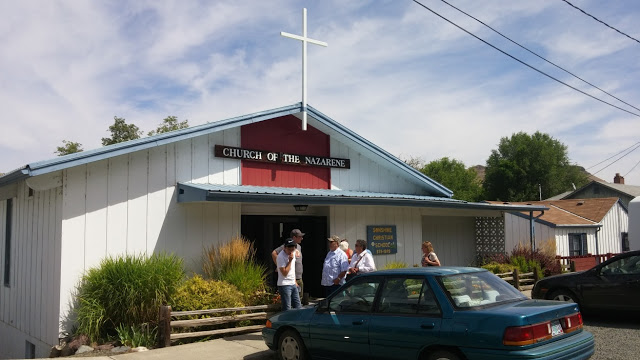
John Day, where we chose to watch the eclipse, is a small city - it apparently has only one traffic light. The size is one of the main reasons that I chose this city - I didn't want to deal with the crowds and traffic in western Oregon.
I looked for a church on Yelp where I could attend their Sunday service, but there were no reviews for any of them. So, we basically ended up choosing one them randomly. The Sunday service at the John Day Church of the Nazarene was about how we should practice being good, and they joked about how this applies even if you're stuck behind a 6-car "eclipse traffic jam" at the stop light. It was a good service - I've add a Yelp review for them, the first review for any church in John Day.
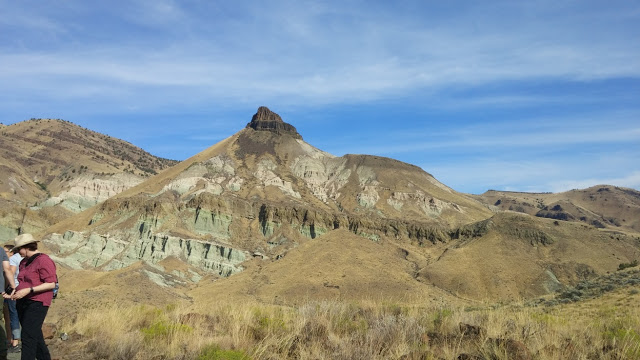
That pointy rock in the John Day Fossil Beds is called "sheep rock" - but I don't see it. Maybe I'm not squinting hard enough, or maybe it'll go "baaa" when I get close to it?
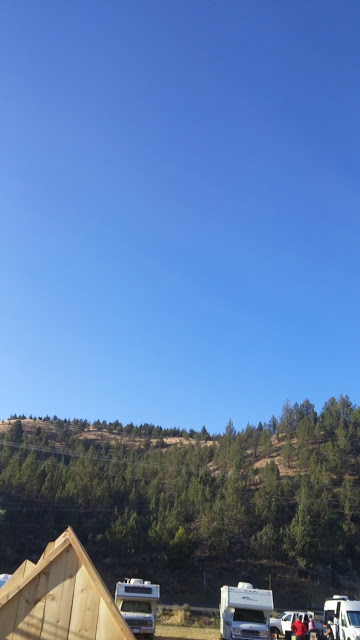
Finally, the morning of Monday, August 21st - the day of the eclipse. Weather: perfect.
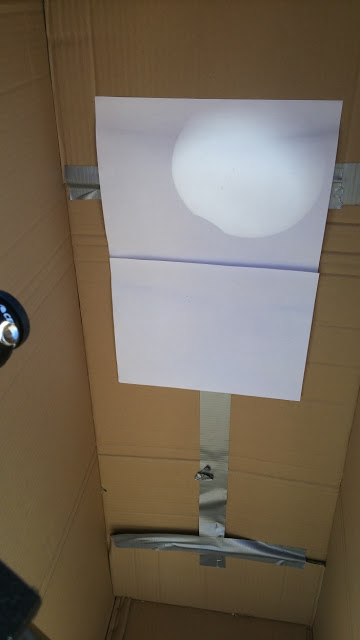
I used a telescope to project the sun's image into a darkened box. This is the result - the sun appears as a circle several inches in diameter - much larger than it appears through the solar eclipse glasses. You know you're looking at the actual image of the sun, because you can see individual sunspots. In addition, many people can look into the box together. Here, the moon is taking the first bite out of the sun, from the lower left. In the sky, the moon actually came in from the top, but the telescope projection setup flips the image.
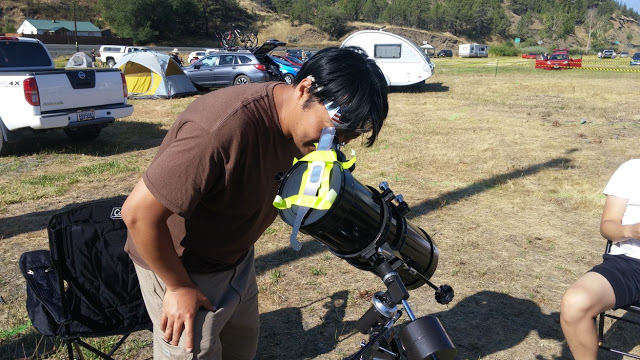
Do NOT try this at home: I'm a professional jerry-rigger.
In case you can't tell what's going on, I'm looking into a telescope pointed at the sun (a big no-no), protected only by a solar eclipse glasses taped to the front with masking tape. Yes, it has the potential to be dangerous - but it did work, and I was able to get a fairly good, direct view of the sun. In the end though, the projection method won out as being easier to see, more safe, and a crowd-drawer.
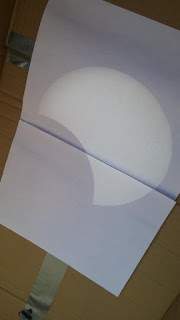
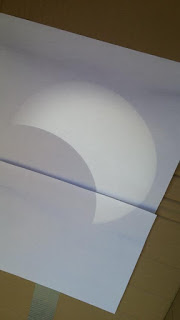
The eclipse proceeds more and more…
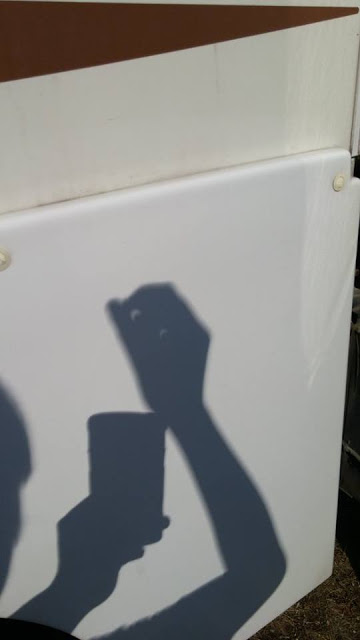
A quick pinhole camera demonstration. Note the crescent-shaped sun projections through the gaps in my fingers.
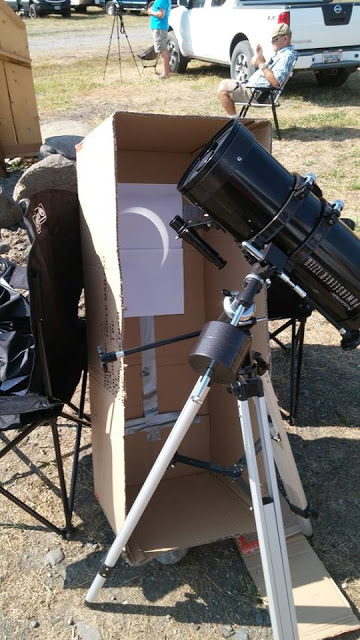
A full view of the telescope projection setup. The eclipse nears totality!
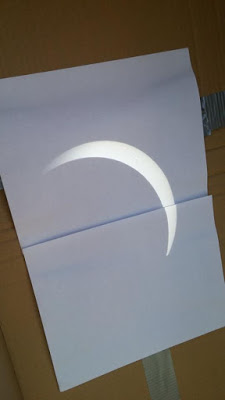
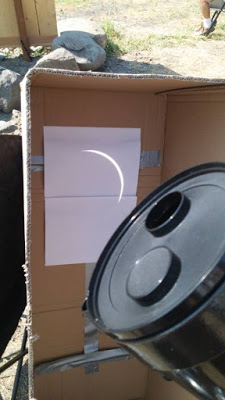
We got lucky with the sunspots at the edge of the sun - they allow us to focus the sun's image up until the very end. We're almost there!
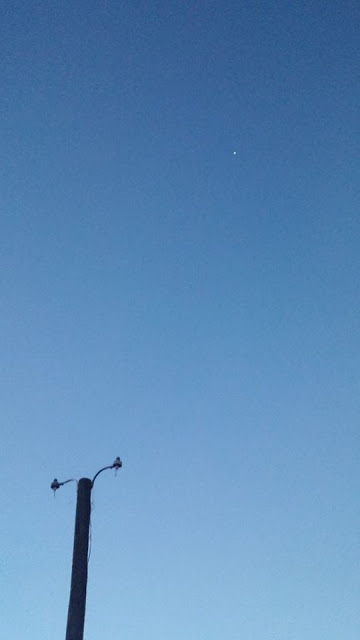
Totality. The sky is dark enough that some stars are visible.
Why, hello there, Venus. Fancy seeing you again, and so near the zenith at 10:22am! I guess I was wrong when I said earlier that you're unrelated to the eclipse!
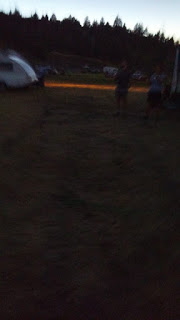
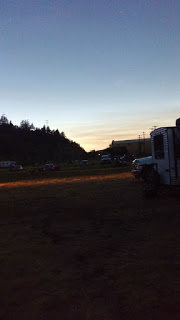
These are terrible photos, and a cellphone camera does a terrible job of capturing light and dark. But it does give you a sense of how dark it got during totality. If I had to put it in words, I'd say that the darkness is comparable to mid-to-deep twilight. It's not midnight dark, and you can see the sunrise/sunset effect all around you, but it's dark enough that you can't really make things out easily on the ground.

I do not have a good picture of the sun during totality. For some things, you just had to be there.
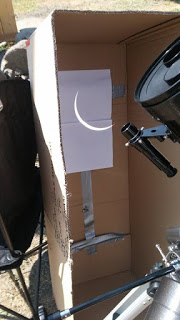
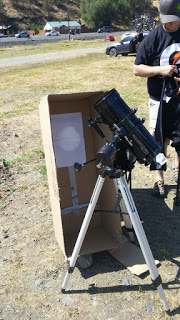
And it's over - the sun comes out of the other end and the daylight is back. You see the crescent sun immediately after totality, and about an hour later, in the last minutes, the moon only covers a tiny portion in the upper left.
Logistically, the trip went as well as I could have possibly expected. There were rumors of gas shortages, and crowds and traffic jams to rival a zombie apocalypse. But we encountered no gas shortages and only the barest minimum of traffic. A shout-out to the cities of Burns and John Day - they were well prepared and they've done everything I could reasonably expect of them to accommodate their visitors.
I often get asked, "what was it like?" I have a threefold answer.
1. The eclipse was the greatest natural spectacle that I have ever seen, by far. I do not expect it to be surpassed for the rest of my life.
2. You know the double rainbow guy? Everyone watching the eclipse was basically like that for the whole two minutes of totality.
3. There is a certain degree of understanding and maturity required to appreciate a total solar eclipse. In fact, I think kids shouldn't see a total solar eclipse. A ten-year-old shouldn't say things like "I don't expect to see anything better for the rest of my life", nor should their first view of the Grand Canyon be diminished by a comparison to a total solar eclipse. But then again, there's that "once-in-a-lifetime" aspect, so it's hard to be definitive.
You may next want to read:
Leave a Reply
You must be logged in to post a comment.
Post Importance
Post Category
• humanities (25)
• current events (30)
• fiction (10)
• history (35)
• pop culture (14)
• frozen (8)
• math (58)
• personal update (19)
• logic (65)
• science (56)
• computing (16)
• theology (103)
• bible (39)
• christology (10)
• gospel (7)
• morality (22)
• uncategorized (2)